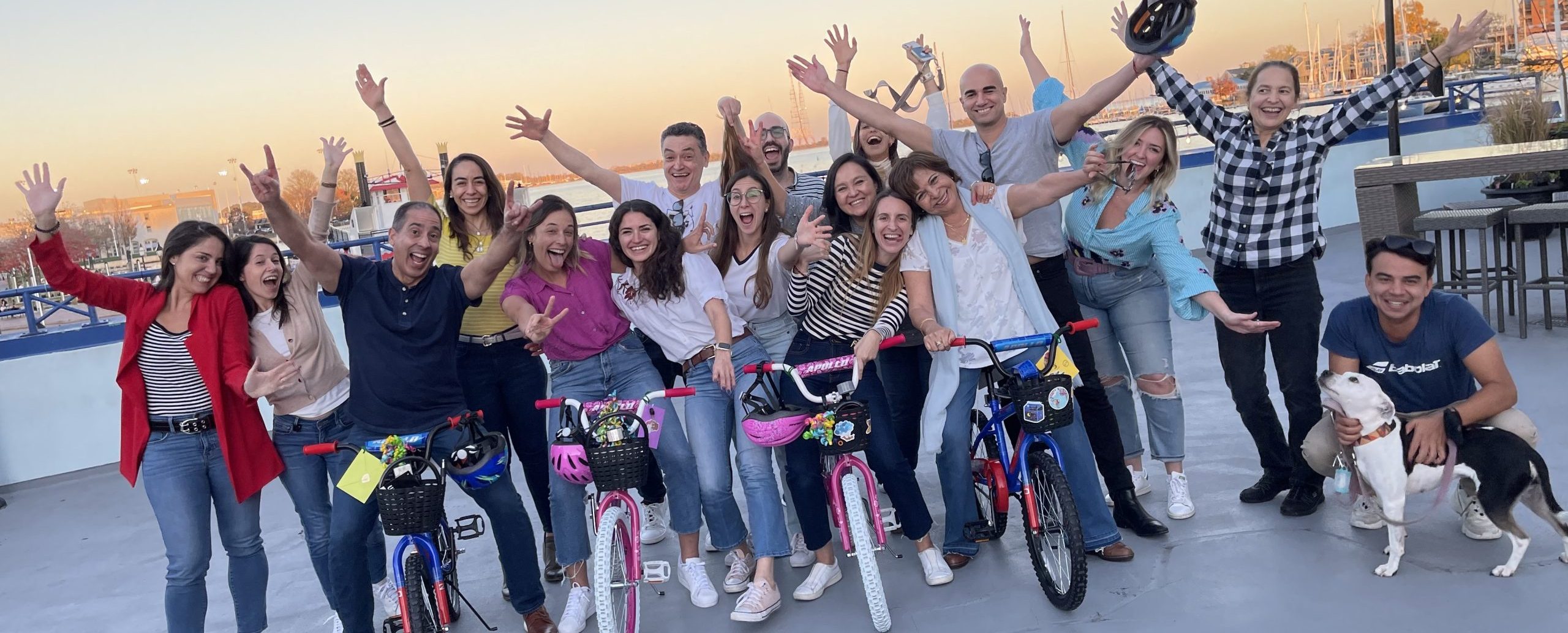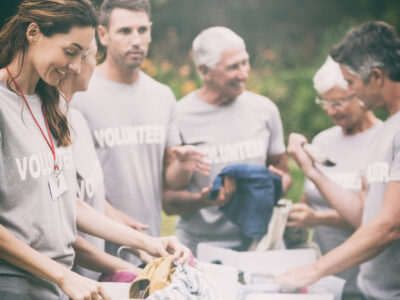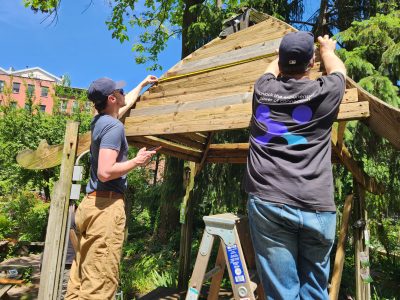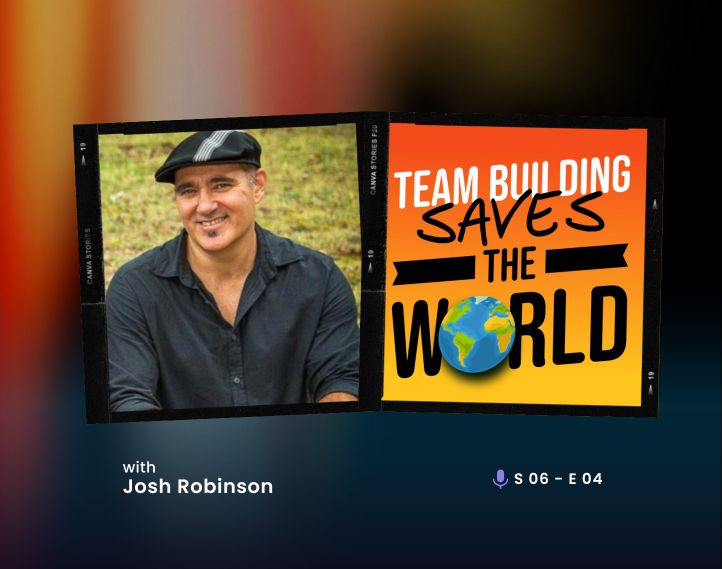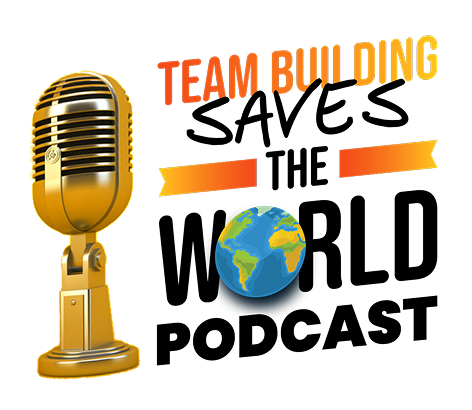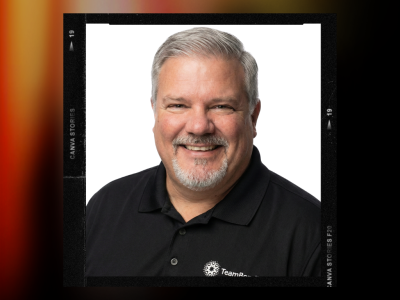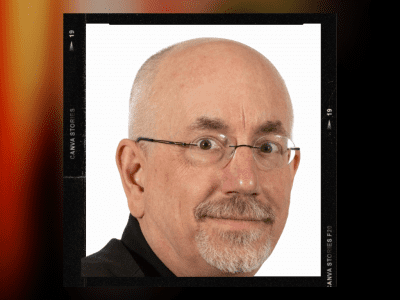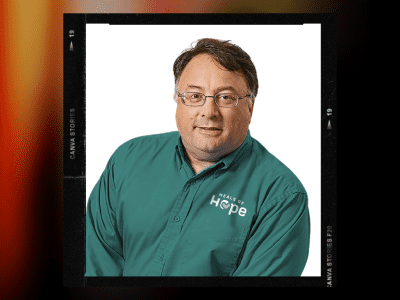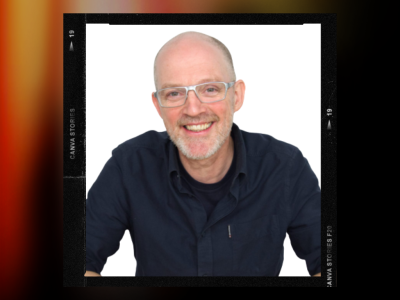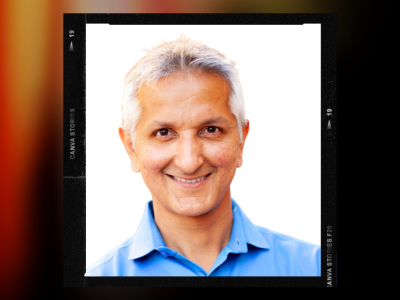STRONG TEAMS DON’T HAPPEN BY CHANCE 
How Music Connects Us When Words Can’t
w/ Josh Robinson
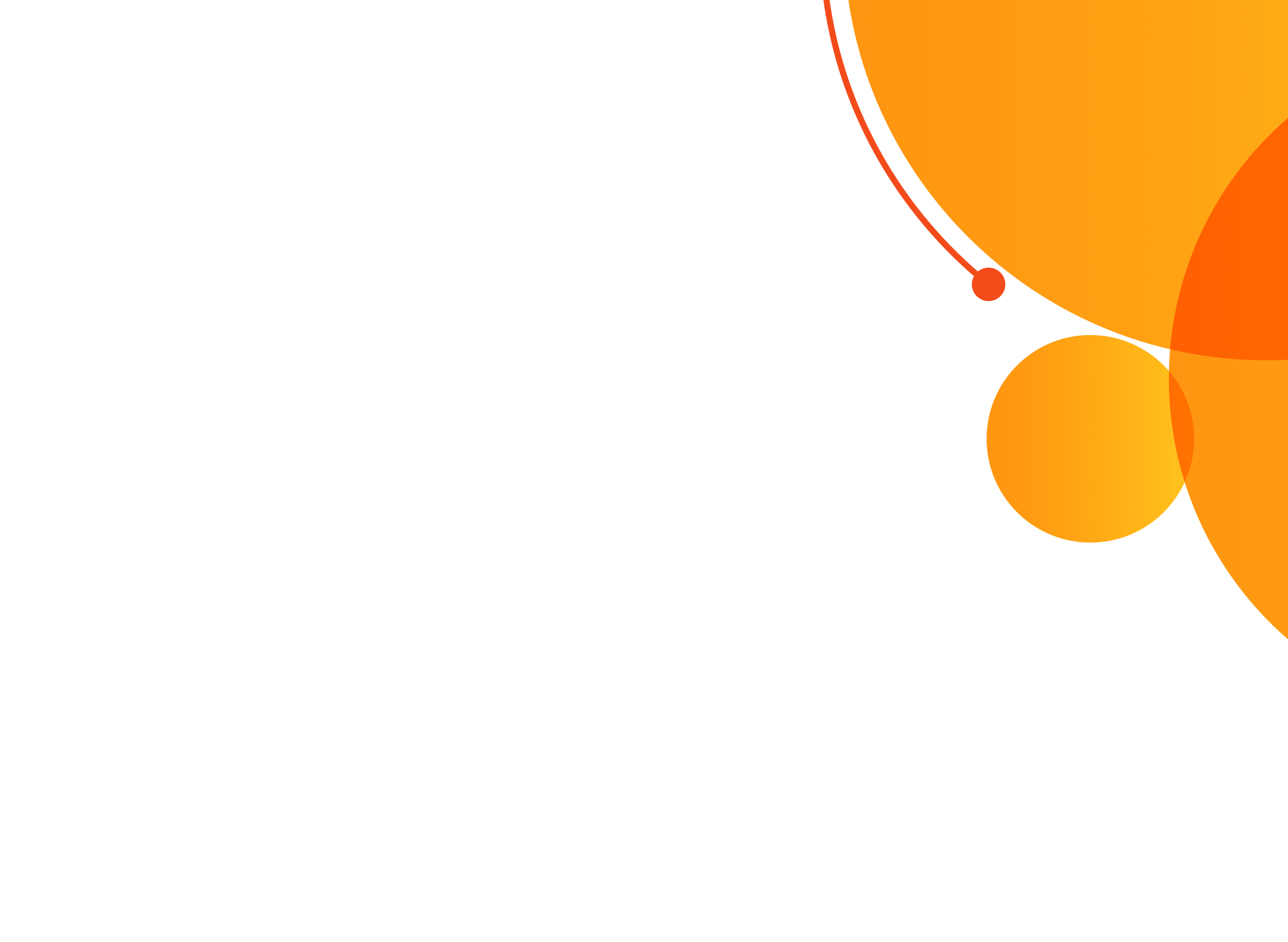
Use the buttons above to listen now.
Transcript - How Music Connects Us When Words Can’t
Rich Rininsland: On this episode of Team Building saves the world.
Josh Robinson: We’re all just human beings, , with a heartbeat playing rhythm. I love arm crossers. I love converting non-believers to believers. By the way, everybody turns back into a fifth grader when you hand ’em a set of drumsticks. And I had a whole story in my head about how much she hated me.
And , no. Did I show up with a colorful vest or a ponytail? No.
Rich Rininsland: Hello team. It’s me. Your old friend, Rich Rininsland, host of Team Building Saves the World. And for today’s episode, I keep being reminded of an old song that says you can’t play a drum. All you do is beat it. So today we’re gonna be talking to master drummer and facilitator Josh Robinson.
But before we do, I have to share some love with all of my supporters at TeamBonding. If your team is ready to experience teamwork through the power of play, to visit TeamBonding.com to learn more. Now, team, join me in meeting a man who very early in life, learned to march to the beat of his own drum and could teach you how best to march to the beat of yours, Josh Robinson.
Josh, this is how we start, man. Thank you so very much for coming on.
Josh Robinson: Glad to be here. Glad to have some conversations about some meaningful topics and ways we can make the world just a little bit better, or a lot.
Rich Rininsland: Nice. And so for my team out there who, who has not yet met you, can we start off just tell us a little bit who you are, how you got here, and especially how drumming became your thing.
Josh Robinson: Absolutely. Yeah. So I am Josh Robinson. As you can see behind me. I am a drummer. I didn’t buy all those just to prove that. And I’ve been a professional percussionist, presenter, facilitator educator for the past 25 years. I think drumming and music saved my life and, and really gave me purpose on the planet.
Early on, I grew up in Woodstock, New York, and my mother was an artist, my father, a musician. And there was some really cool, , musical upbringing that I had in that creative community. I watched my dad be a singer songwriter in front of audiences and kind of work the crowd. And I got to sit in a recording studio and listen to him, , record some famous groups.
I got to sit in the radio station while he did a blues show on Sunday nights, R&B. So really had a rich musical upbringing, but his addiction really created a lot of problems and trauma and drama in all the other areas. So musically, I got a good upbringing. Everything else was a scrappy battle to get to a healthy place, , in life.
So really, I initially found drumming as a, as a means for positive healthy self-expression. I was getting in a little bit of trouble in elementary school and one day my principal said to me, , you’re in here a lot and we need to find some other avenues for you to release some of the things you’re carrying around.
And one of ’em was football, football field, always a good place to be aggressive. And the other was drumming. And he said, , why don’t you get a drum set? And I said, , I don’t think we can afford a drum set. And then he said, why don’t you make your own? And I went home and I started gathering, found objects and pots and pans, and went down into the basement and, , started banging away.
And what I didn’t realize was that every time I came up the stairs, I felt better. I felt lighter, , I was channeling this energy and aggression through the drum. So initially drumming was a place for me to kind of beat on things and be productive and not destructive about it. And then I joined an African Brazilian drum and dance ensemble in college.
And got really really into the, the concept of music for community. And the way that there’s an exchange between the body and the voice and rhythm. And also that there really is rhythm to everything. There’s a rhythm to a conversation. There’s a rhythm to the way we walk. There’s a rhythm to our heart beating in its chest.
There’s a rhythm to companies and communication. So I really kind of started to get the zoom out and see, wow, this is a really powerful tool. It’s a platform and a vehicle.
Rich Rininsland: Now, I understand that when your grandfather was getting ready to transition to pass on that you were playing for him in the hospital.
Can you tell us a little bit more about that and how that led you further in this direction you’re in now?
Josh Robinson: Yeah, absolutely. So my grandfather was, , definitely my foundation for becoming a man. He was the one that taught me how to swing a bat. Yeah, he was the one that taught me how to ride a bike and really showed up for me.
He was funny about it too. I remember being in little league and he said, if you hit a home run, I’m gonna give you five bucks, which back in the eighties was enough. And I clocked that thing and it hit the fence and bounced inside the park. And at the end of the game, he came up to me with 4 75, and , and just, just many, many lessons.
So his name was Irv, by the way, which is a name that isn’t too , isn’t used that often.
Rich Rininsland: It’s fallen away to Declan. Somehow.
Josh Robinson: Yeah, you gotta have rough hands to be Irv, you gotta have a toolbox and you gotta know what to do with it. You don’t like asking for favors and you end a lot of sentences with the hand swat.
So he didn’t like asking for favors and he had a heart attack at age 93 and drove himself to the hospital.
And they said, , he’s a tough 93. We’re gonna operate on his heart. And so, they did this operation and he ended up laying in this hospital bed trying to recover for almost a month.
And after a couple of days in the hospital, I kind of ran out of things to say, , verbally, it wasn’t the way to express myself. So I brought this beautiful hand pan steel drum, and I brought that into the hospital. I said, , everything I need to say to my grandfather, I’m gonna start to say it through this.
I just went into this autopilot kind of, , zone. I played everything I felt for about five hours a day and it really helped me navigate the emotions. It also affected people around me in a way that I didn’t know. I became aware of my ripples. In my case, my ripples were sound and positive energy.
But the nurses I found out later were fighting over his station. They wanted to be closer to the music. The guy with his grandfather, then the beeps and the buzzes of the hospital space. I had strangers come up and ask me if I would go play in their loved one’s room. I remembered going into this guy’s room and I was like, this guy is 1000% rock and roll and I had this metal harp sounding instrument.
How’s this gonna go? ? And the guy said, “Hey Joe, what kind of music do you like?” He’s like, “deep purple and Iron Maiden”. And I was like, okay. , I started playing and he laid back in his chair. So I guess what I became, , acutely aware of was my choices, my energy, my ripples, what I was sending out to others.
And, and it was positively affecting, , people. It was a powerful transformation in that space. So fast forward a year and a half, my grandfather wasn’t able to recover from that surgery, and he did transition. And I used to go drop my son off at school and then drive behind the art museum.
The Rocky, the rocky stuff. Yeah, so I would go to the art museum behind there. There’s a beautiful biking, hiking, river trail. And I would drum back there just to kind of, , get settled, get right. And one day this guy jogging with his dog, I see him out of the corner of my eye. He’s kind of see him staring at me.
He waits till I stop playing. And he comes up and he says, you’re Josh, right? And I was like. Yeah. And he’s like, you don’t recognize me, do you? I said, Nope. And he said, I was your grandfather’s surgeon. I was the one that operated on your grandfather, and we still talk about you. We remember you.
We remember the guy with his grandfather. He had a deep impact on our community. And so I took that as a sign from my grandfather and I decided to act on that and find some places to play in his memory. So I went to hospice and I said, “Hey, I got this instrument”.
They invited me to go play for people in hospice. And then they told me about a bereavement camp that they run for kids, a three day grief camp. And that was started by the Moyer Foundation, Jamie Moyer, famous pitcher for the Phillies and many other teams. He and his wife Karen, they started this organization after meeting a girl with cancer at a Make-A-Wish experience.
They started lending support to like 40 grief camps all over the country. So, , chalk this up to things you couldn’t plan. Right? Like my plan was like, I think when I was little I was like, I’m gonna be Batman when I grow up, ? Plan B was, , plan B was like football player.
And as I kind of went up the ranks, I was like, probably not making it to the league, ? But never did I ever think I would take, , music to the level that I’ve, I’ve been able to take and use it. So I started at the Grief camp and if you ever make it to my website Josh Robinson drums, you’ll see a picture of about 35 kids hugging me.
The first class I ever did, there was a spontaneous group hug, and I said, now I know what I want to be when I grow up. So yeah, that led to another series of non coincidences. Six months later, I was the keynote speaker at the the National Alliance for Grieving Children’s Symposium. I’m sitting on the side being introduced by this pioneer of, , child bereavement.
And I, it wasn’t even registering that she was introducing me. It was like, oh, this, this should be interesting. That sounds like a cool guy. And then she said my name and I had this really powerful presentation with about 400 people from around the country. And after that the airline tickets were getting booked.
So that’s a big area of what I do. And I also do a fundraiser to raise money to give drumsticks to all of the grieving children and children with cancer that I serve around the country.
Rich Rininsland: Wow. Just, wow.
Josh Robinson: Yeah. Stuff you can’t plan on.
Rich Rininsland: Right. Way to make a life for grandpa. Nice job.
Josh Robinson: Thank you. Yeah.
Rich Rininsland: But let me be honest with you here because, , I hate to say this, but I came up with the whole understanding that, , what do you call the guy who travels with a band, the drummer. How do there’s a drummer at your door? He has the pizza in his hand.
Name the joke. I’ve heard it. In fact, I was an uncle long before I was ever a father myself, and I always threatened to buy a drum kit for the kids just to annoy their parents. What on earth made you realize that percussions and drumming could not only be musically fulfilling, but could also lead to healing?
I mean, that doesn’t, that doesn’t, that seems like a dichotomy to me.
Josh Robinson: Yeah, absolutely. I think it’s been a, there’s been a parallel, there’s been a parallel path here. So one of ’em is learning from other cultures, , African music and Cuban music . Brazilian music. So I went to Brazil and Cuba to study hand percussion.
So as, as a guest of that culture, , what I was introduced to was cultural wealth. And different ways to view and value people. Right? And so it’s like everybody in the community is valuable, but it’s not always set up to see it that way. Right? So in Brazil, for example, , carnival is a beautiful time of year.
It’s also about people living and shining above some of their circumstances or their lifestyles. There’s parts for people to dance and people to sing and people to play music. It’s about community, it’s about togetherness. And so there’s a certain energy and a feel that you get when you’re connected with other people.’
So in my initial introductions were through, , African and Brazilian and Cuban drumming. And what I realized was that everybody wants that feeling. Everybody can use that feeling. And there’s something about rhythm that brings you right into the moment. I. Where you don’t have time to judge and assess and overthink.
You’re just there, you’re present. And when you’re present in that space with a group of other people, it’s uplifting, it’s supportive. It’s transformative. And it’s really levels, the playing field, which I think is necessary because there’s so much hierarchy in so many situations. We’re all just human beings, , with a heartbeat playing rhythm.
That in addition to my own personal growth process, and wanting to serve the people that I’m facilitating in the best way possible. So whether that’s, , kids in a school or I actually do a big program in the health humanities space. I teach medical students through music. So I teach at the artist in residence at Thomas Jefferson University.
I go out to the UCSD in La Jolla and work with their medical students and what we found was that medical students need, they need training in authenticity and communication, right? They need training in boundaries and trust building and vulnerability. So all those things can live in musical experiences, but it’s a low stakes environment.
Nobody’s life is on the line. So I guess the more, and I’ve also just been on the front lines working with people for 25 years, and so it’s been a work. It’s kind of like a sculpture, ? Oh, talk less, do more, or, . So there’s so many things that live within music communication, listening, hearing people versus listening to people.
The biases that you bring into situations. There’s so many life lessons and communication skills that can be sharpened and honed within music, but it lives under this umbrella of fun. So my thing is like, we’re having fun. But we’re learning and we’re out of our comfort zone and we are, , connecting with people.
Rich Rininsland: And how do you make this work? ’cause I know you do corporate facilitation as well with this, even with for TeamBonding. How does this work in a corporate setting? Let’s just start there. How does it work in a corporate setting? What kind of, what kind of things are you trying to bring?
Josh Robinson: Yeah, I think many, many lessons can live in that corporate experience. I, first, I listen to the, to the group and ask about some of their goals. , are you trying to improve morale? Are you trying to, , enhance creativity? Are you trying to build better communication skills, , cultivate some joy in the space. People are working, they’re in their work modes and work suits and their titles and so, and also realizing all you can do is make the offering, right? Sure. It’s an invitation. It’s an invitation for the experience, but people are only gonna receive what they’re able or willing to receive.
So the first thing I do is. Try to disarm everybody with their, , you get some arm cross. I love arm crossers. I love converting non-believers to believers yeah, very true. And , there’s a lot of activities that maybe they’ve done that, didn’t hit for them, and that’s okay.
But what the first thing I do is kind of let everybody know that, whether you were good at. Or bad in school of music, or whether you’re on the side of the dance floor or in the middle of the dance floor, or not near the dance floor. You have what you need. So just talking about everybody’s heart is beating in a rhythm.
You breathe in a rhythm. You chew in a rhythm. Some of you unfortunately snore in a rhythm. The windshield wipers are a rhythm. They could be an invitation to tap on the dashboard. so just trying to make. The concept accessible to everybody and go, oh, I guess I belong here. And and so yeah, first it comes with an invitation and then I tell a little bit, I give a little bit of a background about how I use rhythm and music in the world, but then it’s like, okay, everybody stand up.
And we might start with an activity as simple as tell me something that you do in your life that is good for you. How do you feed your mind, body, or soul? So somebody might say, oh, I like to play basketball. Somebody else might say, I like reading, I like bike riding. And so the first thing I actually do is take some of their movements.
And we start to do those things to rhythm. Right, because they’re simple and they’re theirs, and then everybody’s, like this is kind of fun. So I have scaffolding that I’ve created over these 25 years where nobody feels like they’re on the spot, and the next activity I might do like a clapping exercise where you have to clap with somebody.
So now we’re taking it from a me thing to a we thing and we kind of discuss, what changes now that you have somebody across from you that you need to work with? Obviously there’s compromise. There’s self-awareness and group awareness that’s gonna happen now because you need to lock in together.
So I start very simple and basic, and then we work our way up through the activities. We get drumsticks. I teach a lot of rhythm through language, so it never feels like a music class where you have to memorize or learn a pattern. I created this platform using Mexican food words and the syllables of Mexican food words to build our rhythmic foundation.
So I literally have people clapping and tapping and sticking, like rice! Tacos! Sour cream! Rice! And so it’s fun. It’s silly. And it’s accessible. And then after everybody has their footing. And, I like to make people laugh. I’ve been told I’m a witty chap. And so I’m drawing from the people in the room and the personalities in the room as well. You have to meet people where they are. And then after we’ve done the fun Mexican food word activity, then I flip it to creating a word bank based on the theme of the day.
So what we do is the prompt could be something as simple as , what are, what makes a good communicator or what makes a good human being?
Or if you could put this one is a little bit out there, but I, people do respond to it: if we were mad scientists and we could create a clear liquid droplet. That contained an action or a human characteristic, and we dropped it into the water supply. So as people went by the water fountain, they became more compassionate, more empathetic, more accepting, what would you put in the water?
And so we create a big list of things, which really is like a recipe of being a decent, good human being. But it comes from them. So I draw it out from the group. Sure. And there’s a, there’s a power in thinking. Having that conversation. So usually once the list is created, I’ll say, why don’t you identify one that you think is strong in your character and one that you’re working on? Not, I’m not good at, but one that you’re working on?
And so then, they, they, they own it. They look at themselves, reflect a little bit, and then we craft some of those words into beats. And so their words, so they become these like rhythms of intention. So through repetition and through saying it and playing it, we’re building this really powerful connection.
And as we’re doing that, we’re making eye contact with other people around the room. We’re staying connected and and making it fun.
Rich Rininsland: Do you prefer larger groups or smaller groups? Is there even a difference in how this all works?
Josh Robinson: I, no, actually, no I’ve noticed that the bigger the stage, the, the calmer I get.
Rich Rininsland: Oh, really?
Josh Robinson: Like the game slows down a bit for me, so, okay. Like I presented in the convention center with, for 1100 people who all had drumsticks. By the way, everybody turns back into a fifth grader when you hand ’em a set of drumsticks.
Rich Rininsland: That was gonna be my next question. I have to ask first off, which do you prefer? The children are the adults? And is there actually a difference when you give them those sticks and let them go to town and have a good time?
Josh Robinson: I don’t have a preference. I really believe, like I belong to the people. And, and after all of these years, I like the variety. So I, like I, I’ll go from a Montessori school to medical students to fly out to a corporate event.
And what I’ve realized that it all kind of just whittles down to people need connection. People need hope. People want to have some fun. And so no, I don’t have a preference. I mean everybody’s kind of the same when you hand them instruments. So my classroom management chops are pretty, pretty strong.
I’ve been at it for a while. But I think every group and the thing about all the variety and all the different irons in the fire is that I never get too stagnant. I don’t think about, doing the same thing with the same group all the time. So for me, I like a challenge and I like variety.
I like to watch people shift and wa like, walk into a space what are we gonna do? Is this kumbaya drumming around the fire? I’m like, no. Did I show up with a colorful vest or a ponytail? No, it’s not, it’s not that kind of drum circle. When I work in the medical spaces too, I’m like, I’m not a music therapist.
I don’t have creative goals, right? I’ve basically taken a machete and hacked my own authentic path right down the line.
Rich Rininsland: Can you gimme an example? Because the one thing I always love about facilitating, which is why I’m still doing it to this day, is that aha moment, the eureka, that brief spark sometimes maybe all too brief where everything you wanted for them, they’re finally getting into. Can you give us a live example? You don’t have to name names of course, but just give us an example of your own, from your own life where you’ve hit that moment and they realized they were in that moment.
Josh Robinson: Yeah. Honestly, that moment happens all the time just based on creating steps and scaffolding and a process to get them to that point. So, usually there’s a couple things. Once everybody gets the drums or the buckets, and we have this power of this shared sound. Usually that’s the moment of, wow, we’re playing together, what we are connected.
I think everybody surprises themselves in that experience because up to them, they’re like, I’m not good at music, or I got kicked outta band. No, I can’t do this. But I think the aha moment usually comes with everybody sharing the power of that pulse, riding that same wave, and then as they’re doing it, looking around at other people and realizing they’re having that shared same experience. So I think it’s the power of the connection that is always like, ah, no matter where we are, no matter what group this thing works. And it’s not even about me. The power of drumming and the power of rhythm is bigger than than me.
I just happen to be delivering the message today. But it just always surprises me to see people really let go and connect. Yeah.
Rich Rininsland: Mm-hmm. And how do you get those people— because the one thing that I have always discovered is anytime you go into a group… there are the gung-ho people who are, who are ready to do it. They’re amped, they want to have a good time, and then there’s those who are just like, I’m gonna sit in the background and I’m gonna tap my sticks together very quietly. So nobody actually hears me while I’m doing it. How do you get them out of that, out of that mode?
Josh Robinson: Yeah. I think it’s, it becomes obvious as the momentum of the experience. I think they get themselves out of that mode by looking around and seeing that the wave is moving and just about everybody’s on it, but you’re sitting back there holding onto something and you’re gonna stand out more for not participating or for being grumpy than you would for just jumping in.
So I’ve had some really powerful experiences in life. I was invited to the Parkland community after that school shooting had happened. We were doing a day of healing for some of the kids in the community and I realized there, I had a big grand vision of what this was gonna be, and I’m gonna have all those kids there and I was projecting what I wanted for them out of the experience. And when I got there, I realized like, oh, these kids can’t be around loud noises. This particular group, this is too much for them. And so I had a very small group, a meaningful group, but a small group. And I was talking to a colleague about that experience and he said, all you can do is make the offering. So I’m now less attached to worrying about other people’s experience. I know the work is powerful. I know the opportunities are there for them to learn and experience and grow and shift. You can’t help somebody that doesn’t want to be helped. As artists or presenters, normally that’s the person we want to hyperfocus on, right?
Like I could be in an auditorium with 500 smiling faces and the one person that’s staring at me like that, that’s who I’m concerned about in the past. I also had an experience. I used to perform in senior homes a lot when I was getting started. And I remember performing, it was Latin music, so it was a little bit out of their comfort zone.
And I remember this woman sitting in the front row with just the bitterest look on her face. I thought she couldn’t stand the experience, the music, everything. And I had a whole story in my head about how much she hated me, but we finished the song and we finished the performance and she wheels over to me and she was like, oh honey, that was amazing!
It brought me back to this cruise that I went to in Mexico and I was remembering the breeze. And she goes on to tell me this whole story. And I just had to ask, I said, you didn’t look like you were having that much fun. She said, oh, I have a bad hip! I’m always in pain. That was her resting pain face. But I was making a whole story in my head, so I think what, what I really hold onto is just being authentic and leading with the heart. So I think people can, and especially kids, the kids’ authenticity radar is three seconds and they know if you’re for real.
And people in pain, in the hospital, right? They’re really vulnerable and sensitive. But I just think people in general, it’s like, so I’m always thinking also about like. What’s it got to do with them and why should they listen to me? So I was the kid sitting in class like, what’s it got to do with me and why should I listen to you?
So within some of my storytelling and framing the experience, I’ll put some of those things in there. But all I can do is, is, is, is what I’m gonna do.
Rich Rininsland: Everything you’re talking about… yeah, you’ve got a lot of depth in everything that you’re doing and everything that you’re telling us about, and that’s fantastic.
That is amazing. How do you then make sure they’re still having fun? I mean, if everybody’s gonna find those moments where they’re feeling togetherness like they hadn’t before, how do you keep the joy in it besides being your normal charming self?
Josh Robinson: Yeah, I mean the activity itself is joyous. Like, think about how often are you asked to beat on something and —
Rich Rininsland: You would be surprised how often I’m asked to beat on something.
Josh Robinson: Well, I also do an activity where we drum out some negative emotions or stressors or feelings. We’re actually just treating a drum, like a punching bag. I can only keep the joy in myself. I genuinely love working with people. I love connecting with people. So I’m leading by example. I’m open, I’m smiling, I’m making eye contact. I’m tending to the group. But drumming is a joyous experience.
And also there’s humor and there’s little group activities where they break off and work with each other and then get to see different sides of each other, so I think one of the things I do is I also keep ’em guessing. Like my plate, the food is cut into small bites, so we’re not doing anything for too long where it’s like, people don’t check their watches during my session because I keep ’em on their toes.
But, but the activity is naturally joyous so might have a little bit of an advantage. I’m like the uncle that gets to show up with the bag of candy and give it to the kids and then leave because I’m drumming. I think the main thing is like having them realize and reflect. Back through the experience and connect it to who they are. What they’re doing in the world. How any of this can relate to communication or, getting a client, selling somebody something. There’s a lot of humanity that lives in the experience and then my job as the facilitator too is to make those connections so that they can take these things, keep ’em, and use them in the workplace, if that’s what we’re talking about.
Rich Rininsland: Why do you think it works, though? I mean, why do you think that that percussions and rhythm are a method for making that connection for even with the, the vast themes that you’re talking about?
Josh Robinson: Yeah, I think our very existence starts in rhythm. It’s pulsating cells that find each other to form your heart.
The beginning of everything happens because these pulsating cells find each other and start to form your heart. So we’re grownups, we have responsibilities and car insurance payments, and there’s so many things that get piled on us, but I think if you have an opportunity to peel those things away, what it gets down to is there’s a rhythm and play. Adults need permission to play. They don’t play enough. So the other thing is, there’s an activity that I do where everybody finds their pulse. Most people have one . And everybody who lets hope and then they start to tap it on a drum.
And what we can have 50 people, 75 people, a hundred people in the room. Everybody’s, , heart and pulse is pulsating at a different time, different tempo. But never fails within 30 seconds to a minute, the whole group syncs. So we can all start out here with all these different sounds but within 30 seconds to a minute, everybody is now on the same wave. It’s hard to explain. So I think there’s a natural pull, a natural draw to rhythm and togetherness.
Rich Rininsland: It brings me back to… I was talking to a doctor that, one of my old family doctors, and he said that there is a rhythm that we all hear and we’re used to hearing it our entire life.
To the point where we stop hearing it over time because it’s just a part of the background of our existence. But when that beat changes, that’s when we start to notice.
Josh Robinson: Hmm. Yeah. Yeah, that makes sense. That’s why one of the one of the options on your sound machine, your noise machine is, is heartbeat, right? So I think it is in us and it’s just a matter of. I really do think people need that invitation to have these experiences. We’re so quick to judge and categorize and we’re busy and our attention spans have been cut down to 30 seconds. There’s so much coming at us too that I think there’s something really powerful about repetition.
And even as a drummer, when I was coming up and practicing and I’m more of a hand drummer, I’m not so much a drum set player. But you have to work on your rudiments and you have to work on simple things to get faster. So, people ask me, how do you play fast? You practice slow, right?
And if you’re working on something, your brain within a minute is bored of it. It wants to move on to the next thing. So there’s like a discipline and sitting in the simplicity that is also really powerful. And also, a metaphor for work. And, there’s, let’s talk about what’s not being played.
Let’s talk about the spaces. So the space is just as powerful as the sound, and I think a lot, oftentimes when people work together or communicate together, there’s certain people that wanna fill up all the space. When they talk their type A, their clothes were organized last night. They got plans, they got goals, they got savings, they’re here.
And so when you work with somebody that’s more reserved or that doesn’t waste a lot of words, they’re a little more quiet. But when they speak, they’ve thought it through. So how does the rhythm of those two people having a conversation or collaboration, work together? So, there’s a lot of, a lot of metaphor, a lot of parallels between music and communication and teamwork.
Rich Rininsland: I want to go a little bit askew of what we’ve been talking about and just, so you mentioned before how everybody has drumsticks when you do these events. Where do the sticks go, Josh?
Josh Robinson: Where do the sticks go?
Rich Rininsland: Because do they get to keep them? Do you gather them back up to bring to the next group? What do you do with ’em?
Josh Robinson: Yeah, so I have these custom drumsticks. I have a company that makes them for me. And some of them say “be productive, not destructive”.
Rich Rininsland: I love the one that said “beat drums, not people”.
Josh Robinson: And actually there’s, and some of the groups will get, they get their own logo on there as well. So they get their own custom, like if we’re doing a gala or a big event, sometimes they get their own. But generally I want the people to keep the sticks. So usually they keep ’em, it’s a reminder of the experience. We were all together in this powerful experience.
There’s also, if you’re at a conference or a big event, it’s a cool swag bag takeaway. But yeah, they typically get to keep them. And if this resonates for anybody as like a way to get rid of stress or a way to get back into something that they used to do, like how many things do we put on the back burner?
We’re too busy. So it could be an invitation for them to use this as a tool that they continue forward with. Or it can just be a nice reminder of a really connected day where we all shared rhythm and were unified.
Rich Rininsland: Very nice. Very, very nice. Josh, thank you so much. If my team were able to do so, I’m sure you would hear this lovely applause for you. Can you tell us for all my team out there who wants to learn more, where can they find you?
Josh Robinson: All the social media in LinkedIn, Instagram, Facebook. I think I have my own page on TeamBonding website as well for some of the keynotes and some of the programs that I offer, we actually were just in New York at a human resources conference and we were presenting in a boardroom overlooking Columbus Circle and everybody was rocking and rolling in there. And also the drumming is one part of the activity. There’s some other activities that are not, like if we can’t make a lot of noise in the space or if people want to do things for retreats. The activity I did at that conference was called the soundtrack of Your Life. And it’s basically looking back through your life, your experiences, your relationships through the lens of music and creating a soundtrack that then we share some with the group and that’s a very deep and connective activity as well.
So lots we can do using music.
Rich Rininsland: Very cool. Very, very cool. I look forward to hearing more about you in the future and possibly having you come back on so we can talk more about this. ’cause goodness knows, there’s gotta be more and more to talk about all of this.
But before we say our goodbyes for today, I hope you are prepared, my friend, because it’s time to play my speed round.
So here’s how this is gonna work, Josh. I’ve got 60 seconds of music that I’m gonna play. In that 60 seconds, I’m gonna ask you just a series of completely silly, innocuous questions. The objective here is just to find out a little bit more about you.
Plus, if you’re feeling it all ready or challenged, we have hit 17 questions asked within 60 seconds.
Josh Robinson: It’s early, but okay, let’s give it the run.
Rich Rininsland: Alright. As soon as you hear the music, I’m gonna ask the first question and away we go. What’s your name?
Josh Robinson: Josh Robinson.
Rich Rininsland: How many kids do you have?
Josh Robinson: Two kids.
Rich Rininsland: Which one’s your favorite?
Josh Robinson: Neither.
Rich Rininsland: Which is your favorite guilty pleasure TV show?
Josh Robinson: Guilty pleasure TV show… Shark Tank.
Rich Rininsland: What is your biggest inspiration?
Josh Robinson: Biggest inspiration… Stevie Wonder.
Rich Rininsland: Most unusual job you’ve ever had?
Josh Robinson: Most unusual job I ever had was selling subscriptions to the New York Times on the streets of New York City.
Rich Rininsland: Best career advice you’ve ever gotten?
Josh Robinson: Best career… trust that what you need is on the way.
Rich Rininsland: Pancakes or waffles.
Josh Robinson: Pancakes.
Rich Rininsland: What is your favorite musical inspiration?
Josh Robinson: Stevie Wonder again.
Rich Rininsland: Share the most unusual hobby you have.
Most unusual hobby I have… oh unusual. Yeah. Restoring drums.
Josh Robinson: Okay. If you could have any animals, a pet, what would it be?
Any animal as a pet? I would say, oh boy. Any animal’s… a pet, not a pet guy. I live in the city. I’m not a pet guy. Nothing I have to clean up after.
Rich Rininsland: That’s true. Yeah. You don’t want a lot of pets in Philly. You got it! You got 11, my friend. That’s not bad. That’s not too shabby. Very good job, Josh.
I thank you again and yeah, thank you for coming on my friend. I appreciate you.
Josh Robinson: Thank you for having me. I appreciate you and look forward to seeing you down the road.
May 6, 2025
In this lively episode, Josh Robinson—percussionist, teaching artist, and all-around rhythm enthusiast—dives into how music connects people in the most unexpected and powerful ways. He shares stories from his drumming adventures across cultures and communities, showing how rhythm breaks down barriers and gets everyone vibing together. Whether he’s in a school, a prison, or a hospital, Josh proves that music brings people together and creates real, meaningful moments of connection. It’s all about shared beats, feeling seen, and just being in the moment. If you’ve ever wondered “how does music bring people together” or “how does music impact society,” Josh’s heartfelt and high-energy take will hit all the right notes.
About Josh Robinson:
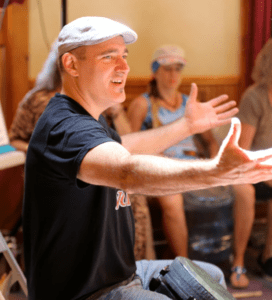 Josh Robinson is a professional percussionist, teaching artist, and drum facilitator with over two decades of experience using rhythm as a tool for connection, healing, and personal growth. Known for his engaging and inclusive approach, Josh leads dynamic drumming workshops and performances in schools, prisons, community centers, and beyond, creating spaces where people of all backgrounds can connect through the universal language of rhythm. His work blends musical expertise with a deep passion for community engagement, emphasizing the power of drumming to foster communication, build confidence, and inspire meaningful transformation.
Josh Robinson is a professional percussionist, teaching artist, and drum facilitator with over two decades of experience using rhythm as a tool for connection, healing, and personal growth. Known for his engaging and inclusive approach, Josh leads dynamic drumming workshops and performances in schools, prisons, community centers, and beyond, creating spaces where people of all backgrounds can connect through the universal language of rhythm. His work blends musical expertise with a deep passion for community engagement, emphasizing the power of drumming to foster communication, build confidence, and inspire meaningful transformation.
There's something about rhythm that brings you right into the moment where you don't have time to judge and assess and overthink. You're just there, you're present, and when you're present in that space with a group of other people, it's uplifting, it's supportive, it's transformative, and it really levels the playing field.
Josh Robinsons
More great podcast episodes.
Season 6 | Episode 18
That’s a Wrap!
Season 6 | Episode 17
Work-Life Integration
Season 6 | Episode 16
Laughing it Off
Season 6 | Episode 15
Corporate Volunteerism in Action
Season 6 | Episode 14
Collaborative Play at Work
Season 6 | Episode 13
The Science of Supportive Workplaces
Season 6 | Episode 12
The Power of Being Present
Season 6 | Episode 11
The Age Advantage
